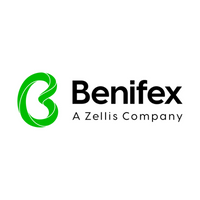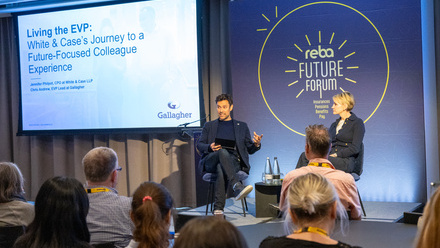The future of total reward statements

Total Reward was initially developed to help employees understand the total value of everything they get from their employer, from salary to benefits. However, somewhere along the way, Total Reward Statements went from giving a holistic view of the value of employment, to becoming just a ‘bank statement’ that shows how much ‘money’ an employee gets from their employer.
As the workplace evolves and employees are no longer motivated only by pay, where does this leave Total Reward? At Benefex, we believe that focus on the overall employee experience is the key to increased business performance, and Total Reward Statements can play an interesting part of that future.
Relevance
Historically, one of the biggest issues with Total Reward Statements is that employers frequently implement them without ever really thinking why. When implemented without much thought, they end up being something that an employee rarely looks at, and that’s if they’re even aware they exist. Just giving employees access to a Total Reward Statement isn’t enough. Employers must tell every employee about it, what it means to them, why it’s important, and then continue to deliver those messages frequently.
Employers also need to make sure that the content of their Total Reward Statements is relevant to the individual. They shouldn’t be an extensive list of all the money an employer has spent on their employees. Quality, not quantity, is the key here.
I’ve seen employers in the past work out how much free tea and coffee costs per employee and put that value in a Total Reward Statement – that just devalues the whole proposition. Making employees focus on the things you really want them to be appreciative of, or things you know are important to them, is better than a long list of benefits.
As technology continues to dominate the workplace, employers have started doing away with printed Total Reward Statements and have moved this tool online – but is that enough?
Technology
The ability to deliver real-time data in HR has made a significant impact on the employee experience, and we’ve seen this in Total Reward too. Allowing employees to see the impact of benefits or payments as they happen has been very well received. This can be particularly engaging when the Total Reward Statement consists of fluctuating benefits like Pay As You Earn schemes.
Real time Total Reward Statements also help employees to understand how their total remuneration changes over a period of time. Understanding the journey they’ve made and the (even minor) improvements in their overall remuneration can have a big impact on how employees perceive the value of their employment. This has obvious benefits in helping to retain your people.
Statistically, people look at their mobile phones 85 times a day. Employers should be maximising on this attention, and push Total Reward Statements to an employee’s phone. This is especially important when trying to reach younger workers (which will make up more than 50% of your workforce in the next three years). The more familiar we become with something, the more we tend to understand it. By enabling employees to access their Total Reward Statements on a mobile device, employers are making it easier for employees to access and engage with them more frequently.
Timing is very important when it comes to mobile technology. Microsoft and The Financial Times show that mobile user activity peaks in the morning (6am to 9am) and in the evening (6pm to 11pm) – both times that employees are likely to be outside of work. Mobile usage research also tells us that when using a mobile phone, people are more likely to be searching for something specific rather than just browsing. Reaching your employees during these times mean you can push notifications about changes to the Total Reward Statements at a time when you know they will be engaging with their mobile device and at a time when you expect them to have time to really engage with them (i.e. on their commute to/from work).
Reaching your employees during these times mean you can push notifications about changes to the Total Reward Statements at a time when you know they will be engaging with their mobile device and at a time when you expect them to have time to really engage with them (i.e. on their commute to/from work).
The future
The insight a Total Reward Statement gives to an employee has a positive impact on the overall employee experience. There is a fast-growing trend for employees to go to work for more than just pay and benefits. In our 2016 report
In our 2016 report ‘Taking the Pulse of the HR industry’, we surveyed 145 HR professionals, and they stated that career development was the biggest area of concern for their workforces. Using Total Reward to show how you’ve enabled or improved career development is an example of how the future of Total Reward Statements could focus on what modern employees really want from their employer.
In the 21st century, employees want to work for organisations they can be proud of, and those which have strong Corporate Social Responsibility. These intangible wants are very difficult to measure, so employers will start to focus on how they can make sure all employees understand and appreciate the type of employer they are working for. As more and more importance is placed on employee health and wellbeing, employers could use Total Reward Statements to show how they’ve had a positive impact on the lives of their employees. For example, if an employer has helped an employee out of a debt, reduced their anxiety, or supported them through a challenging time.
As more and more importance is placed on employee health and wellbeing, employers could use Total Reward Statements to show how they can start to show employees how well their requirements of an employer are being met.
A mixture is key
It is worth remembering that, although a huge amount of focus is drawn to moving Total Reward Statements online and mobile, shifting to this medium totally – and overnight – could risk alienating certain employees. There are certain regions, industries and organisations which rely on less tech-savvy employees day-to-day. Ultimately, online is the future, however as is the case with most things, variation is key to a scheme’s success.
Ultimately, online is the future, however as is the case with most things, variation is key to a scheme’s success.
The future of Total Reward Statements is all about humanity and insight. Consumers are being encouraged to embrace insight in many parts of their everyday lives. From Zoopla notifications advising how your house price has increased, to MoneyBox tracking how well your ISA is doing, insight is running our lives. Now it’s time for Total Reward Statements to give us real insight into how our employers are helping us from a human perspective, rather than monetary one.
Gethin Nadin is director, global partnerships at Benefex.
This article was provided by Benefex.
Supplied by REBA Associate Member, Benifex
The home of award-winning employee benefits, reward, recognition, & communications.







